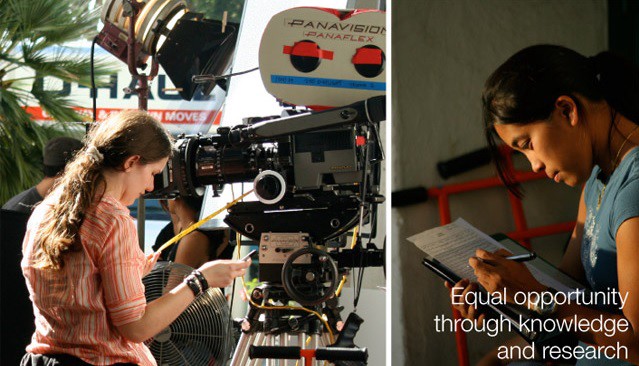New research from Dr. Martha Lauzen reveals that high-profile U.S. film festivals screen more than three times as many narrative films directed by men than women.
It’s well-known that female filmmakers fare better in the documentary realm — but by how much? Even in the non-fiction world, women directors are far from achieving parity. Twice as many docs directed by men as by women are included in the fest lineups.
The annual study, titled “Women in Independent Film,” considered domestically and independently produced feature-length films featured in 23 of the nation’s best known film festivals including SXSW and Tribeca, where women comprised 35 percent of directors working on docs and 19 percent of directors on narratives. If you combine the numbers for docs and narratives, female directors account for 28 percent of the films. While this figure marks an increase of five percentage points from 2014–2015, it falls slightly below the historical high of 2011–2012’s 29 percent. As for the top-grossing films of 2015, women helmed nine percent of them — bear in mind that women are even more underrepresented when it comes to employment on big-budget studio films.
“Women in Independent Film” explores roles behind-the-scenes other than directors, too. Women accounted for 25 percent of directors, writers, producers, executive producers, editors, and cinematographers working on domestically and independently funded films. And while the conversation about women directors is undeniably gaining more traction in the media, these numbers don’t indicate much of a shift in women’s employment. In fact, this marks a decrease of one percentage from 2014–2015’s 26 percent. In 2008–2009, women accounted for 24 percent of individuals in these roles — a mere one percent difference from this year. As Lauzen, the executive director of the Center for the Study of Women in Television and Film, stated, “Women’s representation on independent films is stagnant. In spite of the increasing dialogue about this issue, the numbers have yet to move. We are not seeing year-to-year growth.”
The study also proves how women hire women — the rates of women working behind-the-scenes improves when a woman is at the helm of a project.
See below for more key findings from the study, taken directly from “Women in Independent Film.” To learn more about the Center for the Study of Women in Television and Film at San Diego State University and their research, visit their website. And be sure to support festivals that make women-directed and centric films a priority, such as Geena Davis’s Bentonville Film Festival and the Athena Film Festival, a celebration of women in positions of leadership co-founded by Women and Hollywood’s founder and publisher Melissa Silverstein.
- The festivals considered in this study screened an average of 5 narrative features directed by at least one woman versus an average of 18 narrative features directed exclusively by men.
- The festivals screened an average of 8 documentaries directed by at least one woman compared with an average of 16 directed exclusively by men.
- On all of the films considered, women fared best as producers (31 percent), followed by directors (28 percent), writers (23 percent), executive producers (21 percent), editors (21 percent), and cinematographers (11 percent).
- In those festivals offering competitions, women comprised 30 percent of the directors on the films chosen to compete. This is slightly above the percentage of women directors overall (28 percent).
- Films with at least one woman director had higher percentages of women writers, editors, and cinematographers than films with exclusively male directors.
- On films with at least one woman director, women accounted for 74 percent of writers. On films with exclusively male directors, women accounted for 6 percent of writers. In part, but not in full, this difference can be explained by the fact that often directors are also writers on independent features.
- On films with at least one woman director, women comprised 43 percent of editors. On films with exclusively male directors, women accounted for 15 percent of editors.
- On films with at least one woman director, women comprised 20 percent of cinematographers. On films with exclusively male directors, women accounted for 8 percent of cinematographers.







